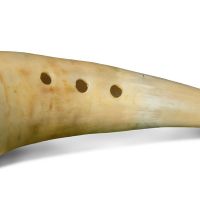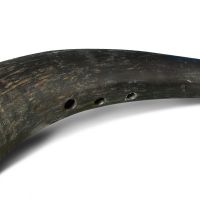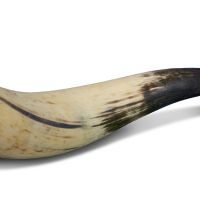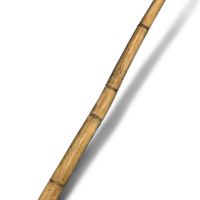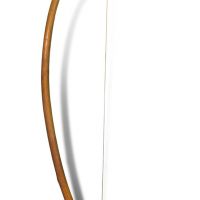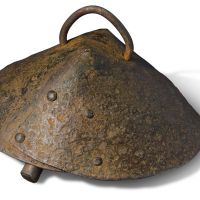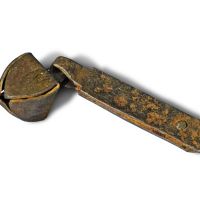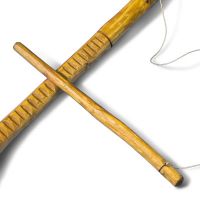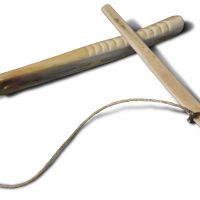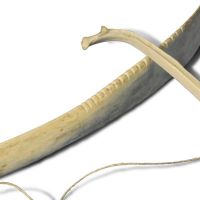Hands-on Sound Tools
The following sound tools – all made by Åke Egevad –are based on ancient models and/or on traditional models.
All the photographs of the hands-on instruments were taken by Jens Egevad
All the photographs of the hands-on instruments were taken by Jens Egevad
Aerophones
Bullroarers and Buzzers
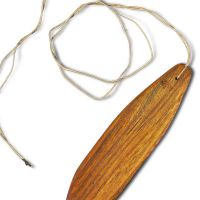 01-Bullroarer-of-wood
01-Bullroarer-of-wood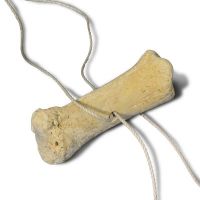 Buzzer of pig's bone
Buzzer of pig's bone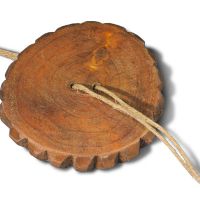 Buzz disc of wood
Buzz disc of wood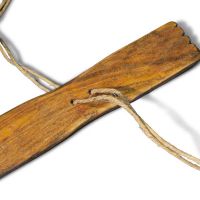 Buzzer of wood
Buzzer of wood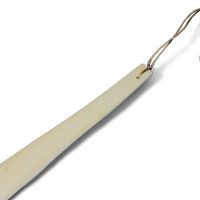 Bullroarer of bone
Bullroarer of bone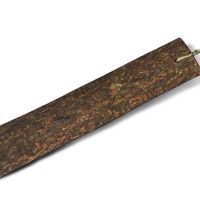 Bullroarer of bark
Bullroarer of bark
1. Bullroarer of wood (traditional)
2. Buzzer of pig’s bone (type model based on prehistoric, medieval and traditional buzz bones)
3. Buzz-disc of wood (traditional)
4. Buzzer of wood (traditional)
5. Bullroarer of bone (type model based on prehistoric finds)
6. Bullroarer of bark (traditional)
Horns
7 - 8. Cowhorns with three finger holes (type models based on prehistoric, medieval and traditional blowing horns)
9. Oxhorn without finger holes (traditional)
Trumpets
10. Wooden trumpets [”wooden lurs”] (based on a find of a Viking-Age wooden trumpet instrument from the ship’s grave Oseberg, Norway, c. 800 AD)
Whistles and Flutes
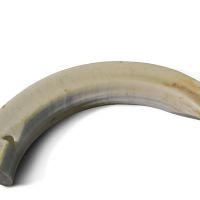 11-Whistle-of-boar-tusk
11-Whistle-of-boar-tusk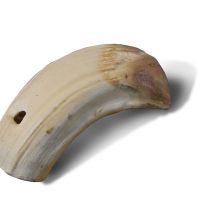 Whistle of boar's tusk
Whistle of boar's tusk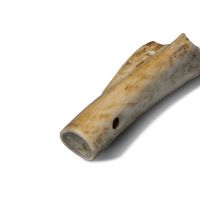 Whistle of sheep's bone
Whistle of sheep's bone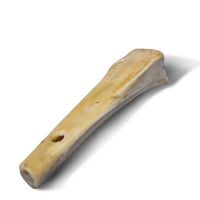 Whistle of sheep's bone
Whistle of sheep's bone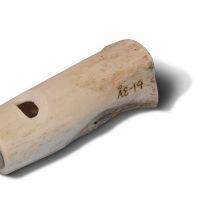 Whistle of sheep's bone
Whistle of sheep's bone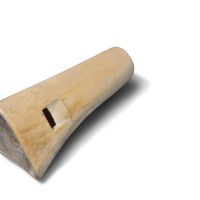 Whistle of sheep's bone
Whistle of sheep's bone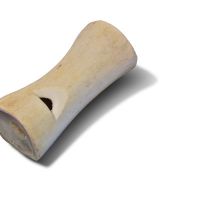 Whistle of sheep's bone
Whistle of sheep's bone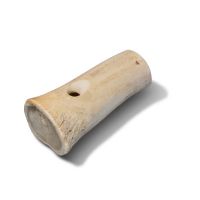 Whistle of sheep's bone
Whistle of sheep's bone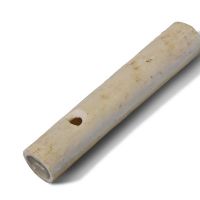 Whistle of bird's bone
Whistle of bird's bone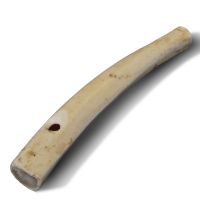 Whistle of bird's bone
Whistle of bird's bone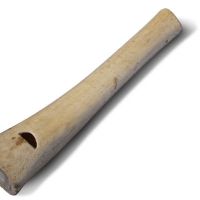 Whistle of bird's bone
Whistle of bird's bone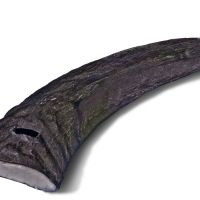 Whistle of sheep's horn
Whistle of sheep's horn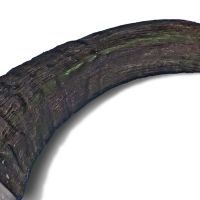 23-Whistles-of-sheep-horn
23-Whistles-of-sheep-horn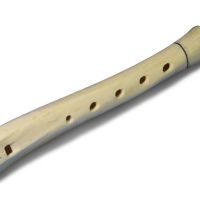 Bone flute with five finger holes
Bone flute with five finger holes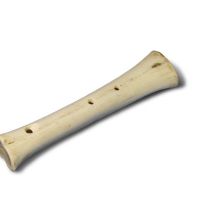 Bone flute with two finger holes
Bone flute with two finger holes
11 - 12. Whistles of boar’s tusk (type models based on finds from a Neolithic cave in Gotland, Sweden, c. 3000-2000 BC)
13 - 18. Whistles of sheep’s bone (type models based on prehistoric, medieval and traditional bone whistles)
19 - 21. Whistles of bird’s bone (traditional)
22 - 23. Whistles of sheep’s horn (traditional)
24. Bone flute with five finger holes (type model based on medieval finds)
25. Bone flute with two finger holes (type model based on prehistoric, medieval and traditional bone flutes)
Chordophone
Musical Bow
26. ”Mouth bow” (based on a Mesolithic bog find from Scania, Sweden, c. 6000 BC)
Idiophones
Bells
27. Cowbell of iron (reconstructed after an Early Iron-Age find from Gotland, Sweden, c. 500-400 AD)
28. Iron pellet bell (reconstructed after a Viking-Age find from Västmanland, Sweden, c. 1000 AD)
Clappers
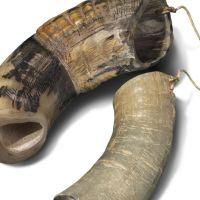 Clapper of cow horn
Clapper of cow horn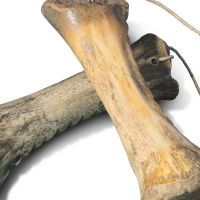 Clapper of bone
Clapper of bone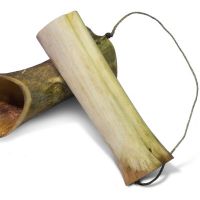 Clapper of bone
Clapper of bone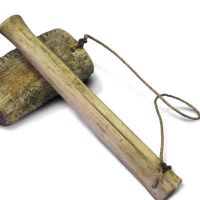 Clapper of bone
Clapper of bone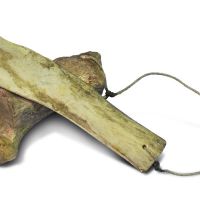 Clapper of bone
Clapper of bone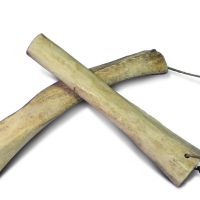 Clapper of bone
Clapper of bone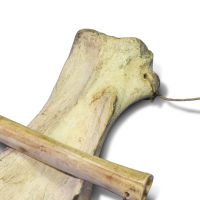 Clapper of bone
Clapper of bone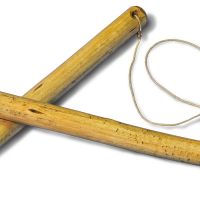 Clapper of wooden sticks
Clapper of wooden sticks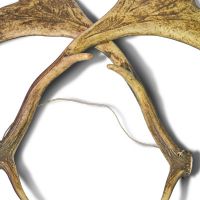 Clapper of fallow deer horns
Clapper of fallow deer horns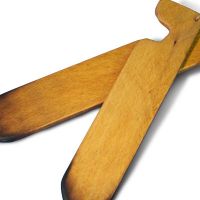 Clapper of wooden plates
Clapper of wooden plates
30. Clapper of cow horn (traditional)
31 - 36. Clappers of bone (traditional)
37. Clapper of wooden sticks (traditional)
38. Clapper of fallow deer horns (hypothetical sound tool based on the assumption that people in ancient times also used horns from fallow deer as clappers)
39. Clapper of wooden plates [in Swedish: snatterpinnar] (traditional)
Rattles
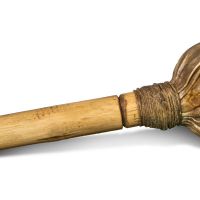 40-Vessel-rattle-of-animal-hide
40-Vessel-rattle-of-animal-hide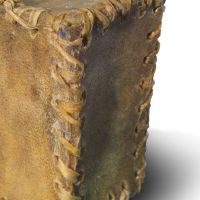 Vessel rattle of animal hide
Vessel rattle of animal hide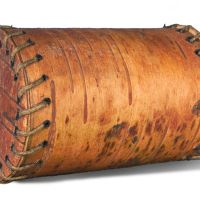 Rattle of bark
Rattle of bark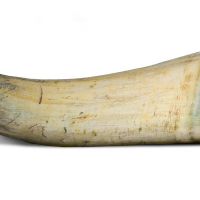 Vessel rattle of cow horn
Vessel rattle of cow horn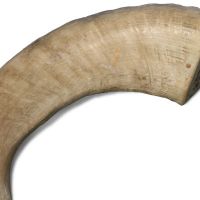 Vessel rattle of cow horn
Vessel rattle of cow horn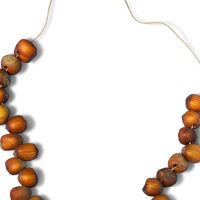 Rattle of hazel nuts
Rattle of hazel nuts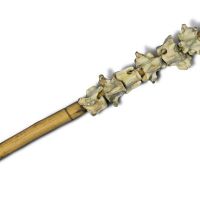 Bone rattle stick
Bone rattle stick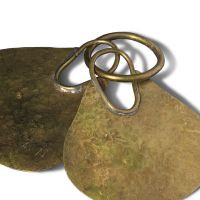 Rattle of bronze for a bridle
Rattle of bronze for a bridle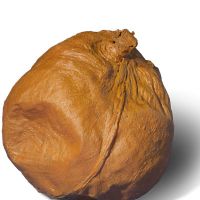 Vessel rattle of pig's bladder
Vessel rattle of pig's bladder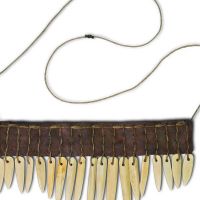 Rattle of bone
Rattle of bone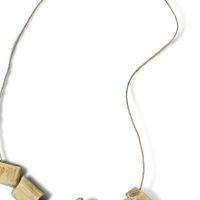 Rattle of bone
Rattle of bone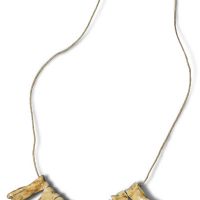 Rattle of bone
Rattle of bone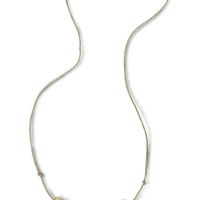 Rattle of bone
Rattle of bone
40 - 41. Vessel rattles of animal hide (traditional)
42. Rattle of bark (traditional)
43 - 44. Vessel rattles of cow horn (hypothetical rattles based on the assumption that people in ancient times also used cow horns as the empty body for rattling objects)
45. Rattle of hazel nuts (reconstructed after a Mesolithic bog find in Scania, Sweden, c. 6000 BC)
46. Bone rattle stick (type model of a medieval find from Vestfold, Norway)
47. Rattle of bronze for a bridle (type model of a Bronze-Age find from Gotland, Sweden, Late Bronze Age)
48. Vessel rattle of pig’s bladder (traditional)
49 - 52. Rattles of bone (type models based on different finds of Mesolithic, Neolithic and traditional bone rattles from Sweden)
Scrapers
53. Scraper of wood (traditional)
54 - 55. Scrapers of bone (type models based on Neolithic finds of possible scrapers)
Various
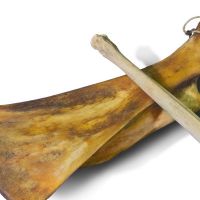 56-Percussion-sound-tool-of-animal-shoulderblade
56-Percussion-sound-tool-of-animal-shoulderblade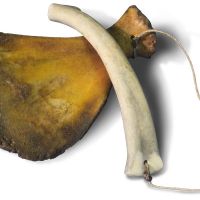 Percussion sound tool of animal shoulderblade
Percussion sound tool of animal shoulderblade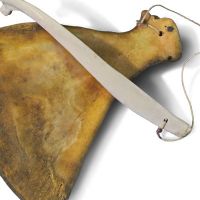 Percussion sound tool of animal shoulderblade
Percussion sound tool of animal shoulderblade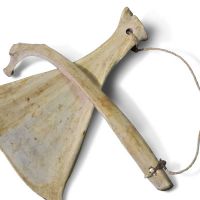 Percussion sound tool of animal shoulderblade
Percussion sound tool of animal shoulderblade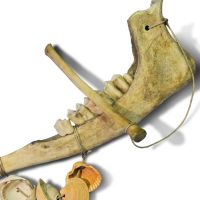 Combined scraper and rattle of animal jaws with cockle shells
Combined scraper and rattle of animal jaws with cockle shells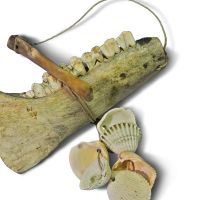 Combined scraper and rattle of animal jaws with cockle shells
Combined scraper and rattle of animal jaws with cockle shells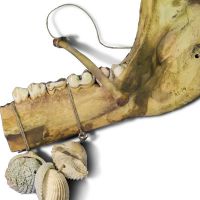 Combined scraper and rattle of animal jaws with cockle shells
Combined scraper and rattle of animal jaws with cockle shells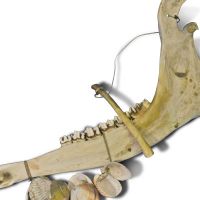 63-Combined-scraper-and-rattle-of-animal-jaw,-with-cockle-shells
63-Combined-scraper-and-rattle-of-animal-jaw,-with-cockle-shells![Friction drum of bone - [in Swedish: skogsdjävul, in German: Waldteufel] (traditional) Friction drum of bone](http://www.emaproject.eu/images/various/thumbs/64-Friction-drum-of-bone.jpg) Friction drum of bone
Friction drum of bone![Percussion instrument from a whalnut shell - [in Swedish: valnötsmälla, krick krack, in French: cricri] (traditional) Percussion instrument from a whalnut shell](http://www.emaproject.eu/images/various/thumbs/65-Percussion-instrument-from-a-whalnut-shell.jpg) Percussion instrument from a whalnut shell
Percussion instrument from a whalnut shell.jpg) Percussion sound tool from a hollow woonden trunk
Percussion sound tool from a hollow woonden trunk
56 - 59. Percussion sound tools of animal shoulderblade (type models based on the Palaeolithic ”percussion find” from Mezin, Ukraine)
60 - 63. Combined scraper and rattle of animal jaws, with cockle shells (type models based on a Neolithic find from Gotland, Sweden, c. 3000-2000 BC)
64. Friction drum of bone [in Swedish: skogsdjävul, in German: Waldteufel] (traditional)
65. Percussion instrument from a whalnut shell [in Swedish: valnötsmälla, krick krack, in French: cricri] (traditional)
66. Percussion sound tool from a hollow wooden trunk (traditional)
Photographer: Jens Egevad



